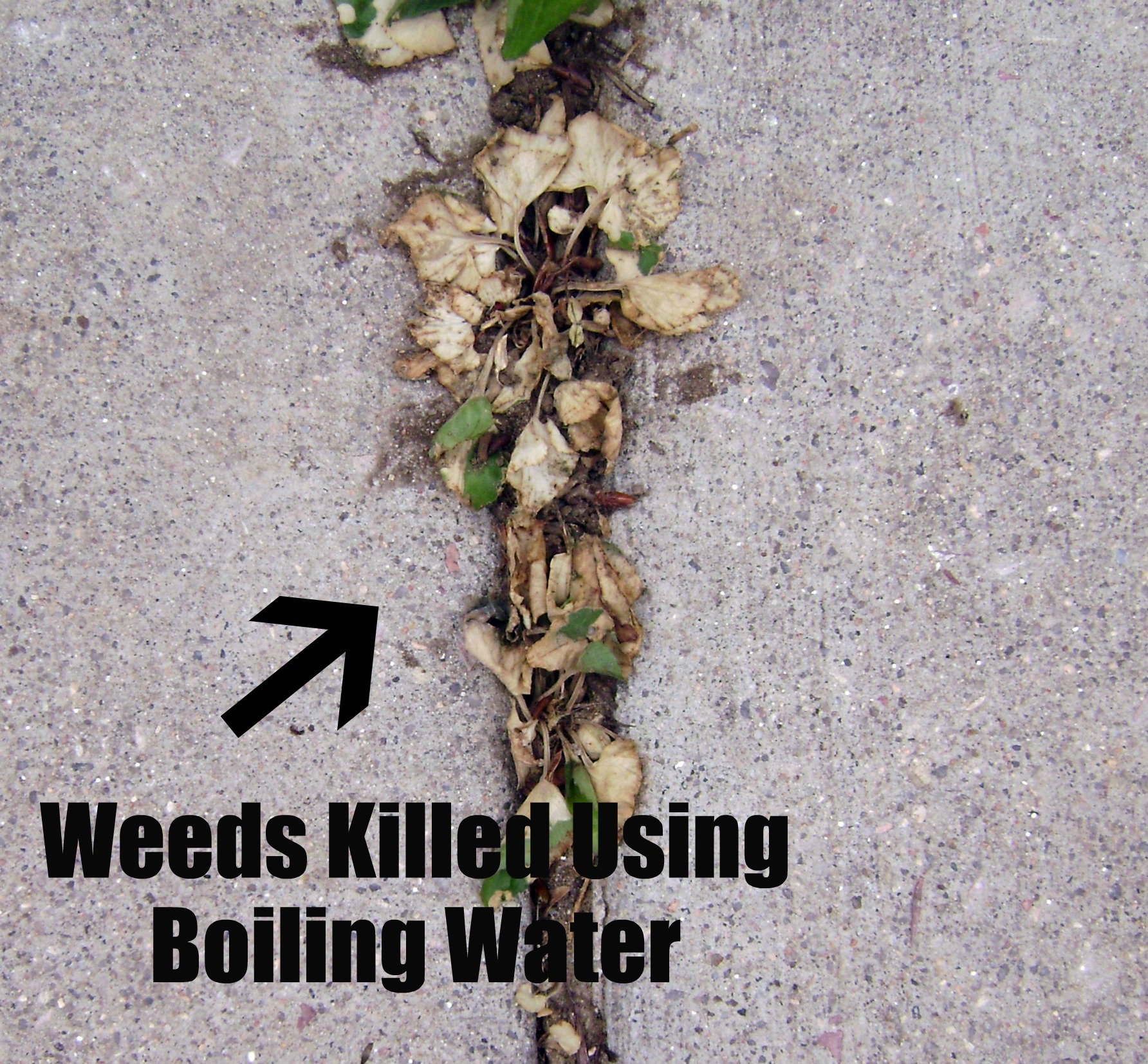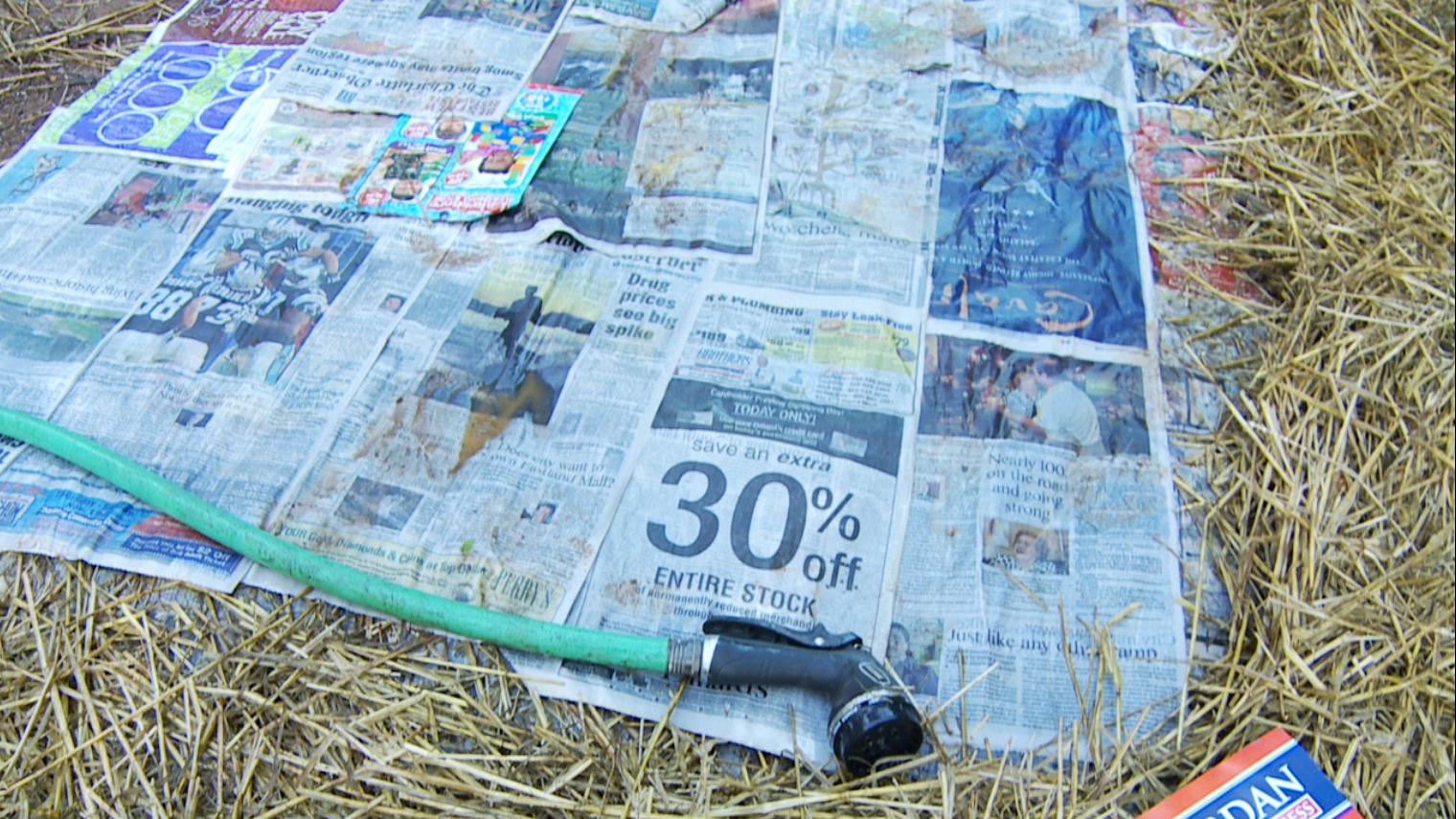
| |
| gravel gardens |
| landscaping |
| irrigation |
| lawn doctor |
| rockeries |
| dry stone walls |
|
| home |
| contact us |
| our gardens |
| gardening articles |
Weapons of Mass Destruction Part 3My little mini series tirade against the abuses of weed-killers and pesticides is coming to an end, so this week we will look at the alternatives. As mentioned in week one, you cannot beat a bit of old-fashioned elbow grease by digging out those troublesome weeds with a fork or edging spade. Dig deep, beyond the weed, turn over the soil and hand pick or tug it out. Yes I know, your back will hurt, your hands might blister and your brow will sweat – but it’s rewarding for your health, the soil and your footprint on this planet. But, for those who want an easier option than the brute force approach, then luckily we have other methods that don’t involve the nasty stuff called glyphosate. A petrol brushcutter will decimate and slice off very stubborn weeds especially if they come fitted with the changeable disc blade, but be careful you’re not just dispersing seed heads as they will just end up in your soil again and return with a vengeance. The same applies to rotovating; initially it does a wonderful job by turning up weeds and roots, leaving them battered and seemingly lifeless on the soil bed. But if you don’t spend time meticulously raking and removing, you will find seeds have sprouted and your weeds have miraculously been given a new lease of life. All vegetation needs light to grow, so after strimming (especially if your weeds are a metre high), rake up all the debris and then cover with a thick piece of black plastic – if you can soak the soil prior to laying the plastic then even better. This is best done when the temperature is high as this will then ‘cook’ the weeds and get rid of any harmful fungi, bacteria and pests – otherwise known as solarisation. If possible, leave this to ‘simmer’ for at least a month, after which you will find that all the weeds (except possibly the practically indestructible Bermuda buttercup) have died. You can then remove the plastic and start to plant, or if you want to sow veggies then simply cut slits in the plastic and plant your crops in the gaps. You can always cover the plastic with a fine gravel or pine bark to make it more attractive. An even more eco-friendly version would be to substitute the plastic for newspaper or off-cuts of cardboard. It might look a little messier – and there’s always the risk that Google maps will be able to profile you from what tabloid media is spread on your garden! For those who want a quick fix, there are these other options, which do the job at varying degrees. For example, don’t waste any of your boiling water from vegetables by pouring it down the sink. Pour scalding water on stubborn weeds – especially in the drive or calcada – and it will kill them off. Even leaving a long garden hose exposed to a the sun on a hot summers day, will produce near boiling water when first turned on, so spray it on your weeds too. Many of us love a good dose of salt and vinegar on certain foods, but your garden weeds won’t agree. Apply a good sprinkle of rock salt directly on your weeds in gravel beds and driveways and they will soon wither away. Vinegar mixed in equal measures with water will penetrate deeper and destroy the roots of more stubborn weeds, so save up any leftover vinegar from pickled onions, gherkins and rollmops and you have an instant organic herbicide. Add some liquid soap to the mix and the resulting sticky dressing is literally ‘to die for’! Another fast way to destroy weeds – and anything else in your path, so a HUGE note of caution here – is the old flame torch. For obvious reasons these are best used in Northern climates where the surrounding area is more damp, as the propane or paraffin burner will scorch and sizzle the most stubborn of weeds and obliterate them right back to soil level. Fantastic for dealing with a large uncultivated area, but don’t use it if there is any kind of risk of trees catching alight or in windy, dry conditions. Always have hose and water supply ready in an emergency and first check with your local bombeiros for their regulations of use. Finally, one other way to reduce weeds is simply to plant more shrubs and ground cover. Thickets of borders with colour and foliage will help smother weeds and the lack of sunlight getting to their roots, will stop them growing. So, there you have it, plenty of simply ways to overcome weeds; keep you fit, healthy and toxin free; and encourage more wildlife, birds and beneficial insects into your Monsanto-free, organic-style garden. Next week we will talk about hardy plants and shrubs for those who live in areas that get nipped by the frost. Bye for now |
|
PORTUGAL NEWS - GARDEN LANDSCAPING ARTICLES Read our latest gardening article published in the Portugal News. SEE OUR GARDEN LANDSCAPING PORTFOLIO CONTACT US |
||
 |
||
 |
